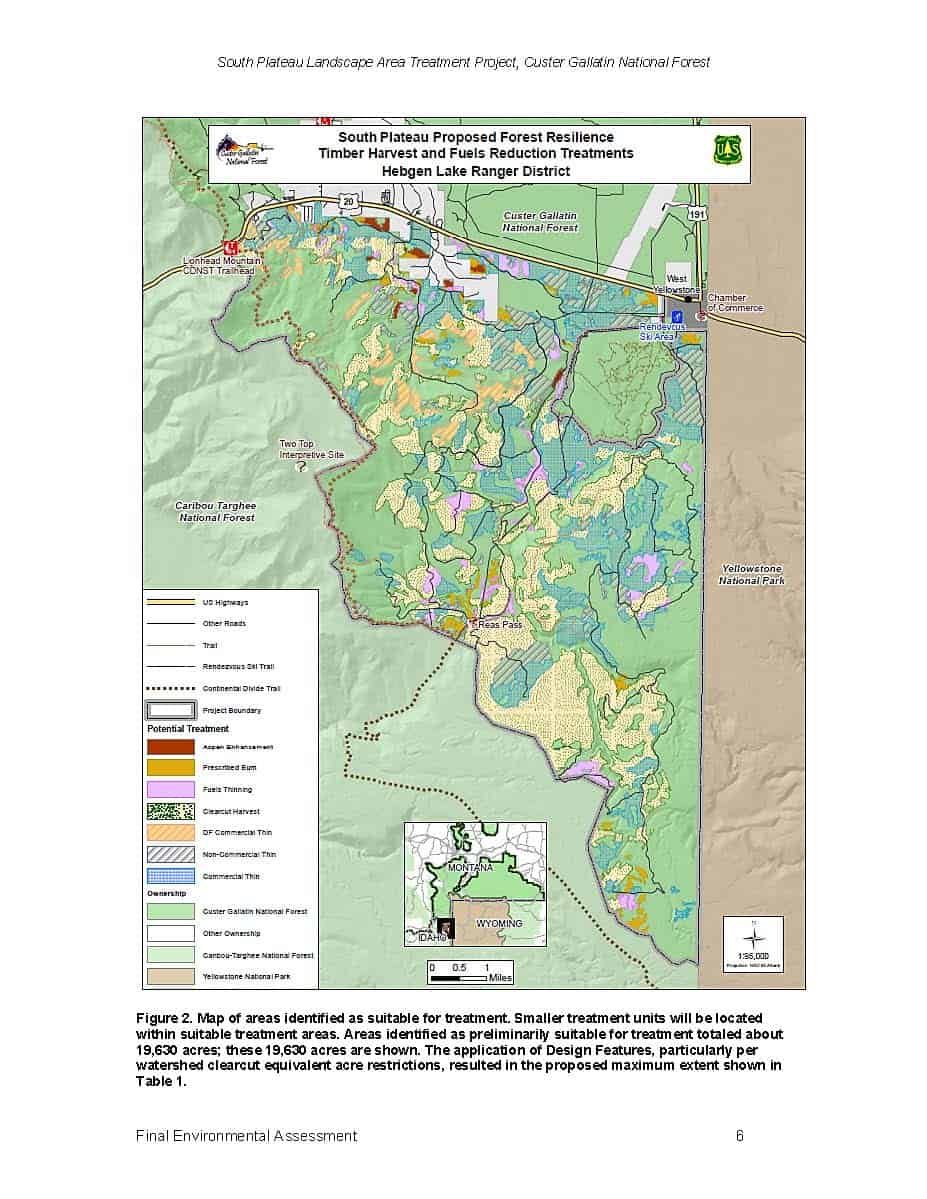One of the things I try to do is attempt to tell the Forest Service side of the story. Sometimes news stories will tell only one side. I’m not blaming reporters nor the Forest Service for that state of affairs, it’s just the way the system is. However, I’ve found by reading the response to comments and response to objections you can usually figure out most of it. Sometimes FS or BLM employees will answer your questions. So I do have a project that could use a volunteer to Adopt the Project, specifically the South Plateau Area Landscape Treatment Project. on the Custer-Gallatin. Visiting the project area could make for a nice field trip, especially before tourist season (it’s around West Yellowstone). Here’s a news story. It’s a 142 page EA, and I don’t think response to objections are posted yet.
If you read the CENTER FOR BIOLOGICAL DIVERSITY SIERRA CLUB ● WILDEARTH GUARDIANS ALLIANCE FOR THE WILD ROCKIES NATIVE ECOSYSTEMS COUNCIL objection, you’ll find that these objectors are seriously not fans of condition-based management. It’s also over 15 years, so the commercial part, around 12000 acres, is less than 1000 acres per year. So it’s got that as well.. large sounding numbers because it’s so lengthy. We’ve discussed condition-based management before many times here, but a volunteer wouldn’t have to go through that aspect of the project.
When I see “clearcuts” I generally think LPP; sure enough…
Most of the project area (91% or 36,098 acres) is forested. Lodgepole pine (Pinus contorta) dominates most of the forested area, covering 33,000 acres. About 80% of the lodgepole pine (over 26,000 acres) is rated as highly susceptible to mountain pine beetle (Dendroctonus ponderosae)1. Mountain pine beetles often girdle and kill trees; large scale outbreaks result in high levels of host tree death. Currently, the South Plateau area is not only highly susceptible to a beetle outbreak, but also highly likely to experience (93% probability) a severe pine beetle outbreak.
…The proposed treatment actions are estimated to increase stand resistance to insects by reducing the area rated as highly susceptible to pine beetle from over 26,000 acres to under 16,000 acres, and reduce the likelihood of a high severity outbreak from 93% to 61% or less. The proposed treatments will also reduce the rate of spread and impacts of dwarf mistletoe 1 . Landscape resilience in the context of forest management means that an ecosystem and its component parts can absorb or recover from the effects of disturbances. Silvicultural treatments designed to create age, size, and species mosaics will increase landscape heterogeneity. At the landscape level, a heterogeneous landscape is thought to be more resistant and resilient to insect damage than a homogenous landscape (Larson, Stover and Keyes 2012).
Then purpose and need 3 is treating hazardous fuels according to the EA -51% of the project area is within the 2020 Gallatin County Wildfire Protection Plan3 defined Wildland Urban Interface.
It seems to me that there are all kinds of interesting questions about this project. If you have mature LPP old enough to be beetle fodder, should you wait until it gets killed (we all know what that looks like). Or do we want to get some new LPP stands started so there is age diversity at the landscape scale? Wouldn’t that be good for carbon? But for now, the LPP are not dead, so how preemptive should the FS be?
Anyway, I think there are many interesting aspects to this project from the non-legal side that might be worth exploring. If you are interested, please contact me. Email is on the donate widget to the right of this post.

I’m not volunteering, but this sentence got my attention: “At the landscape level, a heterogeneous landscape is thought to be more resistant and resilient to insect damage than a homogenous landscape.” Someone might generally think this, but that’s not usually what lodgepole pine in this country looks like (within its natural range of variation). So what is the desired condition? (From the “Plan Consistency Table,” p. 75.)
“The national forest supports the natural diversity and
distribution of native tree species, generally within the
natural range of variation. This diversity and distribution
support the resilience and adaptive capacity of individual
tree species. The forestwide desired condition for
presence of tree species is described in table 6.”
And how is this project consistent with this desired condition?
“This project was not designed to attain this desired condition,
but it doesn not foreclose the opportunity to maintain or
achieve this component over the long term at the forestwide
scale.”
This highlights a couple of things. One is the meaninglessness of the requirement to be consistent with desired vegetation conditions. No vegetation management project could “foreclose the opportunity” of getting it right some day. (I argued against this language back in the day for just this reason.)
The other is the need for a forest plan to identify areas where it wants reducing fire risk to to trump ecological integrity, and give those areas a different desired condition, and air this out with the public at the plan level before they try implementing projects there.